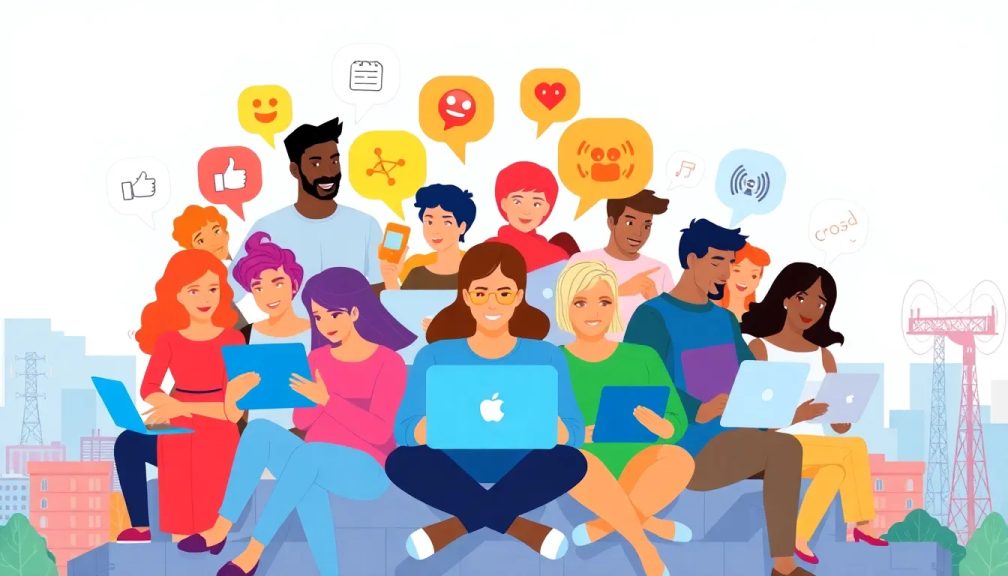The history of the Internet part 3: The rise of users

In the vast landscape of the Internet, the evolution of user engagement has marked a significant turning point. No longer just a passive source of information, the web has transformed into a dynamic platform driven by user participation, creativity, and interaction. This article delves into the intricate history of the Internet, tracing the rise of the user and examining the profound implications of this shift.
The shift towards user-generated content
As the Internet matured, the reins of control transitioned from a handful of tech experts to millions of everyday users. This democratization had both positive and negative outcomes, reshaping the digital landscape.
In the early days of the web, content was primarily created by a select few, predominantly experts and organizations. However, with the advent of tools that allowed every individual to publish their thoughts, opinions, and creations, the Internet became a canvas for personal expression.
- Platforms like Blogger and WordPress democratized blogging, allowing anyone to share their voice.
- Social media platforms such as Facebook and Twitter enabled users to connect and share content instantly with a global audience.
- Video-sharing platforms like YouTube allowed users to become content creators, fostering a new era of entertainment.
The rise of Web 2.0
Tim Berners-Lee’s vision for the Web was originally about delivering static information, akin to an online encyclopedia. However, the emergence of Web 2.0 marked a pivotal shift, enabling two-way communication and user interaction. This evolution transformed passive browsing into an engaging experience.
Technological advancements played a crucial role in this evolution. As dynamic web technologies emerged, websites began to evolve from static pages to interactive platforms. This shift allowed users to:
- Engage in discussions through forums and comment sections.
- Contribute content collaboratively, as seen in the rise of Wikipedia.
- Share their multimedia creations, ranging from videos to art, fostering a vibrant online community.
The explosion of multimedia content
While text-based content dominated the early Internet, the introduction of multimedia dramatically changed this landscape. The combination of faster Internet speeds and new file formats paved the way for a more enriching user experience.
With the development of the MP3 format in the early 1990s, the audio landscape changed forever. Users could now easily share music files, leading to platforms like Napster facilitating music sharing across the globe. This innovation sparked debates over copyright and the legality of file sharing, issues that continue to be relevant today.
As video streaming technology advanced, platforms like YouTube revolutionized the way users consumed media. The ability to upload, share, and watch videos instantaneously opened doors for new content creators, allowing for:
- Viral trends and challenges that captivated audiences worldwide.
- Educational content that made learning accessible, from tutorials to lectures.
- Independent filmmakers gaining recognition and visibility.
The emergence of social media marked a fundamental shift in how people interacted online. No longer confined to forums or email, users could now connect instantly and share their lives with friends and followers worldwide.
Platforms like Facebook and Twitter transformed personal connections, allowing individuals to:
- Share life updates, photos, and videos with their social circles.
- Engage in real-time discussions on current events and social issues.
- Participate in grassroots movements and campaigns, significantly influencing public opinion.
The challenges of user-generated content
However, this shift towards user-generated content was not without its challenges. The democratization of information led to concerns regarding misinformation, privacy, and the overall quality of content available online.
As millions of voices emerged, the Internet became a battleground for conflicting perspectives. The spread of misinformation, particularly through social media, has had serious repercussions, including:
- Influencing public health responses during crises, such as the COVID-19 pandemic.
- Polarizing communities over political and social issues.
- Facilitating the rapid spread of conspiracy theories.
Where do we go from here?
The future of the Internet will undoubtedly be shaped by its users. As technology continues to evolve, so too will the ways in which individuals interact online. The rise of generative AI is a recent example of how the Internet landscape is shifting once more, raising questions about originality, authenticity, and the role of human creativity.
In a world where algorithms dictate what we see and consume, it is crucial for users to remain vigilant and discerning. The Internet's potential to be a force for good relies on a collective commitment to fostering a space that encourages:
- Critical thinking and informed decision-making.
- Respectful dialogue and constructive debate.
- Support for diverse voices and perspectives.
Ultimately, the legacy of the Internet will depend on how its users choose to engage with it today and in the future. The responsibility lies with each of us to shape a digital world that reflects our values and aspirations, ensuring that the web remains a place of creativity, connection, and opportunity.




Leave a Reply